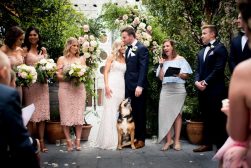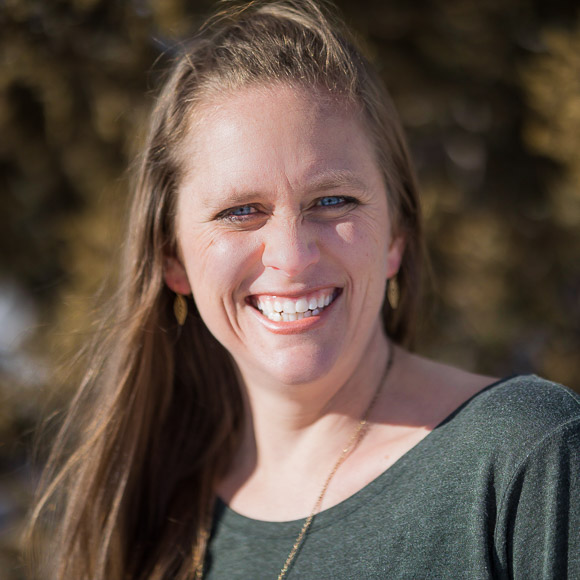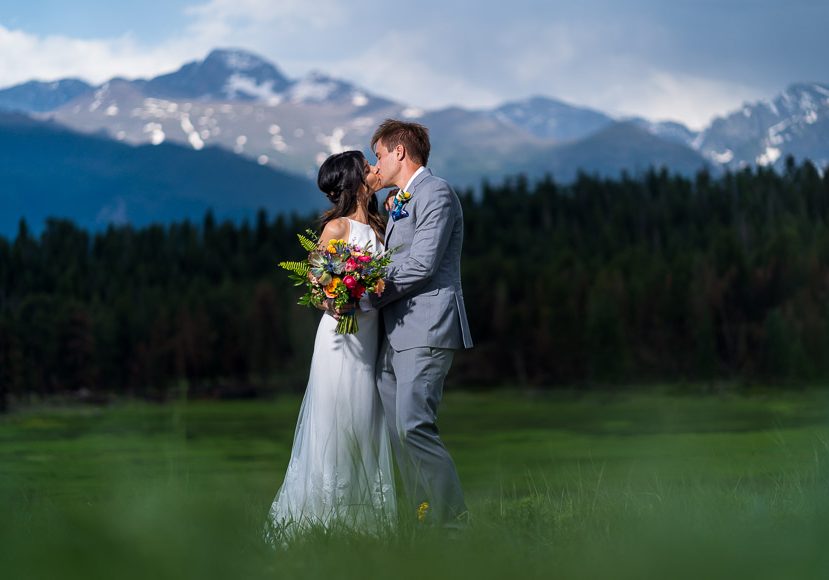
Comprehensive Guide to Wedding Photography in 2023
Want to become a wedding photographer this year? Learn everything you need to know for success in this in-depth guide by an industry veteran.
Welcome to the ultimate wedding photography guide, where I’ll walk you through a process to strategize, market, build, and execute your business.
We’ll start by taking a look at your interests and reasons for pursuing wedding photography and work our way through everything from accounting to post-production and gear.
Don’t worry – we’ll talk about photography tips too.
With over a decade of experience in the wedding photography industry, I have gained valuable knowledge and skills that I’m excited to share with you.
In this article, you’ll learn everything you need to know about wedding photography to not only help you capture stunning and timeless wedding photos but build a sustainable business.
If you’re ready to take your wedding photography skills to the next level, be sure to read on!
Table of Contents
Why Do You Want to be a Wedding Photographer?
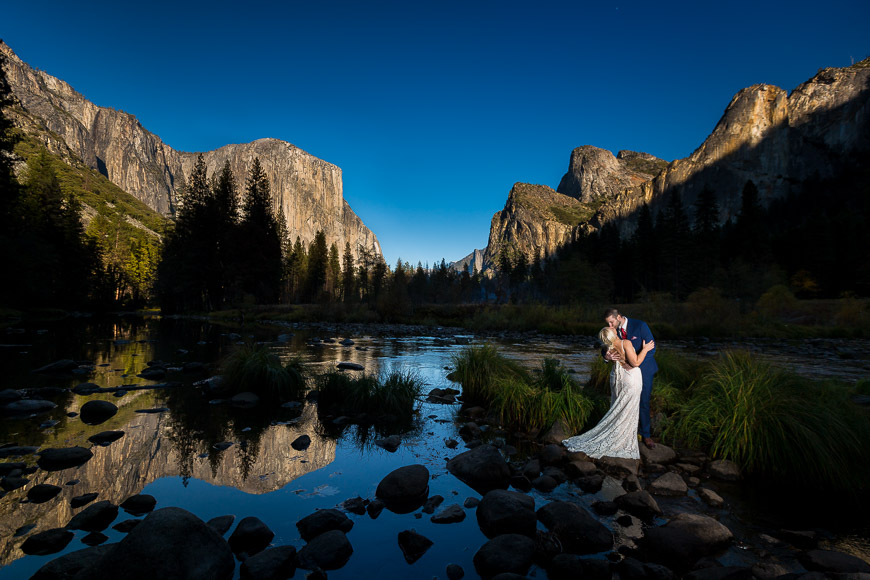
If you’re looking at becoming a wedding photographer or growing a wedding photography business, it’s always good to start by looking at your intentions.
There are a lot of benefits to the wedding photography industry. However, it can also be a challenging endeavor.
In this section, we’re going to take a look at some of the benefits of a career in wedding photography.
As you think through your intentions and get clear on your goals, it will help as you decide how to market your wedding photography and run your business.
Before moving through the coming sections, write down for yourself why you think you want to be a wedding photographer.
Maybe wedding photography seems like a glamorous job to travel to beautiful places and get paid to take pictures. Perhaps you like the idea of working for yourself and being creative.
Or maybe you want to do something meaningful and capture the most important day in a client’s life.
Benefits of Wedding Photography as a Career
Wedding photography allows you to exercise your creativity in service to clients that will cherish your work for generations.
It’s also a fairly flexible career because you have the freedom that comes with working for yourself and setting your own schedule. You choose how much work to take on and how to prioritize different aspects of your business.
Because wedding photography is constantly evolving with trends, techniques, and technologies, wedding photographers are constantly learning, growing, and developing their skills.
As part of the vibrant wedding industry, wedding photography can be very social and collaborative as you work with a variety of wedding professionals, such as wedding planners and florists.
One of the things I love most about wedding photography is that most of the time, I get to deal with clients on one of the happiest days of their lives.
If I’m going to be in the service industry, serving couples in love is a pretty good way to do it. But it’s not all roses and cake.
Myths About Being a Wedding Photographer
Some people think that photographing weddings is easy money. While wedding photography can be a lucrative career in the photography industry, it requires a lot of hard work, dedication, and skill.
Additionally, wedding photography can be very seasonal work, depending on your local industry, requiring you to work really hard during a busy season in order to be able to ride out a slower season.
Obviously, anyone can be a wedding photographer, right? I should just hire a friend to take some pictures.
To be transparent, that is actually how I started out as a photographer. Still, it’s by no means easy to produce consistent, high-quality, emotionally compelling images in a high-pressure, high-stakes environment.
One of the most common misconceptions people have is that wedding photographers only work weekends.
In fact, between shooting, editing, marketing, accounting, answering e-mails, and having client meetings, it’s harder to define when I’m not working than when I am.
While wedding photography is flexible, it’s also very demanding, especially because you don’t get paid when you’re not working.
Deciding What Kind of Wedding Photographer You’ll Be
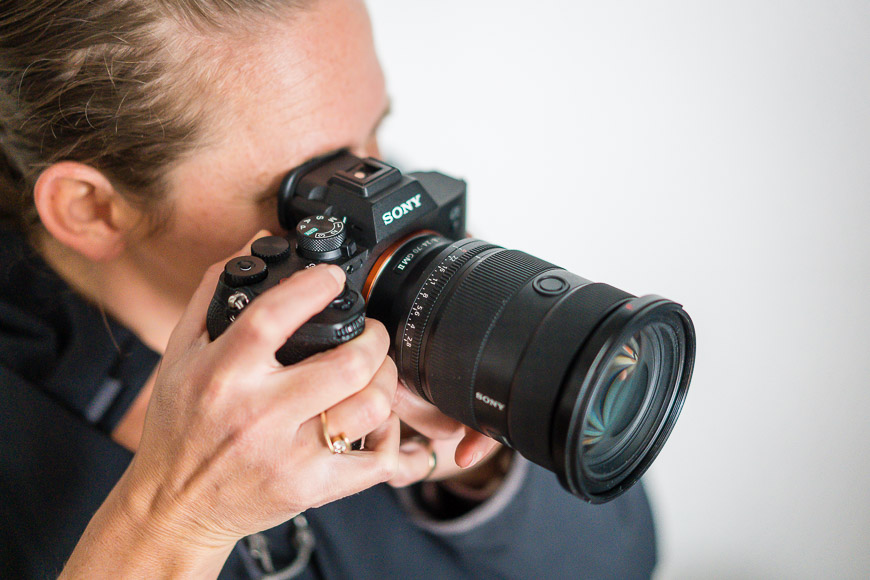
If you took an honest look at your reasons for wanting to pursue wedding photography as a career, a good next step is to decide what kind of wedding photographer you’ll be.
In this section, we’ll talk about the different ways to run a wedding photography business, as well as different styles of wedding photography. With your goals from the previous section in mind, you should be able to narrow down what is the right fit for you.
If your primary focus is flexibility, you might run a small business as a solo photographer.
In contrast, if you’re super social, you might grow a team of associate photographers and even expand your business to include videographers or other services. From there, you’ll also define your creative style and artistic vision.
After you go through the steps of deciding what kind of wedding photographer you want to be, we’ll move on to identifying your ideal clients.
Your purpose, business structure, and artistic style will all play a part in determining what types of clients you want to find and then how to attract them.
Ways to Run Your Wedding Business
The solo photographer runs their business on their own, offering their services directly to clients. This is likely the most flexible way to run the business, but it’s also limiting in how many weddings a photographer can take on in a year.
In order to scale your business as a solo photographer, you might eventually look at becoming a boutique studio and specialize in high-end, personalized services.
If you grow a team, you could generate more income by offering more photographers and other services such as videography and photobooths.
Having a team of photographers or affiliate photographers is a way to scale a business in order to generate more income. However, it does require more overhead and management.
Destination wedding photography is another specialty that is highly sought after.
Many photographers like the idea of traveling and working in exotic locations. Specializing in destination weddings may require additional logistical planning and costs.
It may also influence how long it takes to get wedding photos back, with travel times and the associated tiredness factoring into the equation.
Types of Wedding Photography
The types of wedding photography are constantly growing and evolving with the industry. Wherever there is a trend or a niche, there seems to be a style of wedding photography to complement it.
Often, wedding photography styles merge wedding photography with something else, such as fashion, fine art, and adventure.
Wedding photography styles emerge when we define what a photographer focuses on during the wedding day.
For example, traditional wedding photographers focus on posed formal portraits of the wedding party in order to create classic, timeless images.

Make wedding day posing easier, faster and more enjoyable for you and your clients with these downloadable posing cards.
Limited time pricing ends soon.
Alternatively, photojournalistic wedding photographers take a documentary-style approach to the day, capturing candid moments and emotions.
In my opinion, photographers will end up with a hybrid of styles in order to serve their clients. For example, everyone wants at least some posed pictures of the family that’s traveled thousands of miles to be together.
So we shoot those along with focusing on photojournalism most of the day and adventurous environmental portraits of our couples around sunset.
Who are Your Ideal Wedding Photography Clients
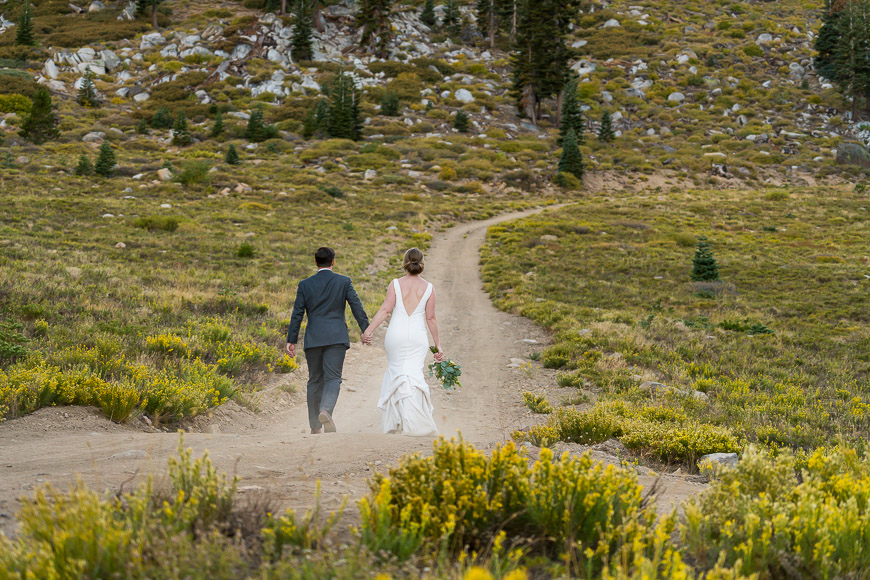
Ideally, your wedding photography clients will value your artistic vision and pay you handsomely for it. Some of that will come down to marketing which we’ll talk about in the next section.
In the meantime, we need to identify who your ideal wedding clients are.
If you have any past photography clients, it’s worth a quick evaluation to see who you enjoyed working with and why. What are the qualities and values that make someone great to work with?
Chances are your ideal clients will share at least some of your values.
Budget is going to be a big factor when determining your ideal clients because if they can’t afford you or you can run a profitable business, then it doesn’t matter how perfect the fit is.
It’s time to do some market research to see what ballpark pricing is in your area but know that the range can vary wildly.
What Really Matters About the Client Avatar
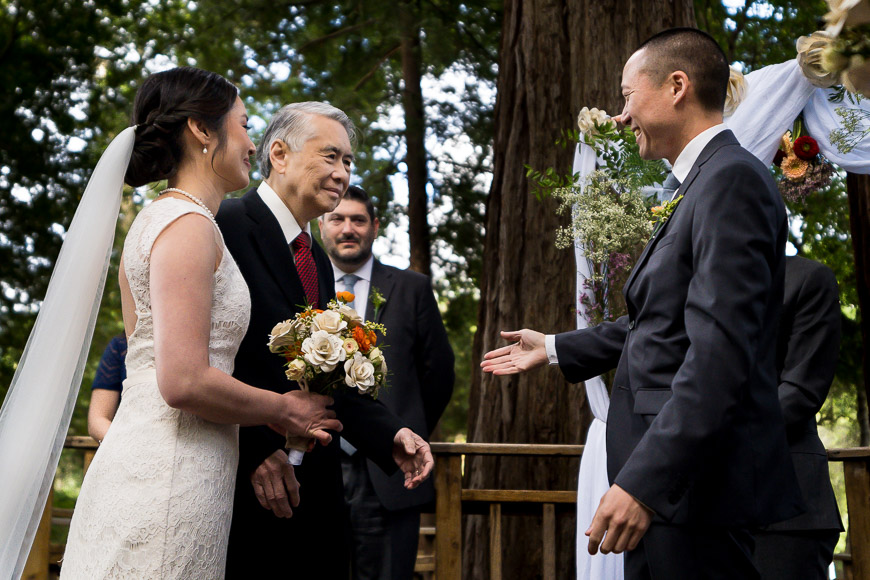
Throughout the marketing world, you’ll hear this idea of building a client avatar on which to base your marketing strategy. The concept is that you visualize an avatar of your ideal client, including age, location, education level, occupation, and so forth.
After building a little mock-up of the type of person you want to attract, you can then build a plan for attracting them.
The client avatar strategy can definitely help you with building a brand that resonates with your target audience. That is the goal, after all.
A few words of caution:
First, don’t see your avatar as a fixed persona. Instead, let them evolve over time as your business grows and services change.
Second, don’t focus so much on age, occupation, and income level but rather take note of values and interests.
And finally, the avatar is only a step toward building a brand and if you build a brand successfully, you will attract clients through other avenues like referrals.
Identifying Your Target Market
To start simply, your target market will be engaged couples that are planning to get married in your area or desired business location.
Sometimes keeping it simple is important and more important than getting fancy. From there, you’ll return to your vision of why you want to be a wedding photographer and what type of business you’re building.
For example, as adventurous wedding photographers, our ideal clients are lovers of adventure who are attracted to our environmental portraits.
After over a decade in the industry, our target market also consists of clients who value photography and our experience and expertise.
Similarly, if you’re a high-end fine art wedding photographer, you’ll need clients who value your style of photography enough to pay your prices.
If you have a specific artistic vision or affiliate empire growth goals, that will help guide the types of clients you need to find and how many of them. Or, better yet, let’s let them find you. Time for the next section on building your marketing plan.
Building Your Wedding Photography Marketing Plan
Often the first step to building a marketing plan is to define your target market, which hopefully you’re closer to after the previous section.
As I mentioned, sometimes it’s best to start simple such as knowing that you’re going to target couples in your location. Simply put, you might build a brand around being a Yosemite Wedding Photographer.
Depending on the size of your town and the scale of your marketing, you might be able to attract a lot of business simply by putting the word out that you’re the photographer in town.
If your market is saturated, however, then you’ll have to find a more specific niche. Don’t overlook doing a little research on your competitors to see what you have to work with.

Fast-track your success as a wedding photographer with tried and tested marketing and SEO tips and tricks.
You should take some time to review what we’ve talked about so far. You’ll want to use everything we’ve gathered to identify what sets you apart and what makes your services special.
This can include your photography style, your approach to capturing the day, your experience, and your overall brand image.
Initial Marketing Steps
Initially, you need to develop your messaging and build your online presence. Your messaging communicates the unique value and benefits of your photography services and differentiates you from other photographers in the market.
Once you have defined your message, it’s time to build your online presence.
Your website is often the first impression that potential clients will have of your business, so it’s essential to create a professional and visually appealing website that showcases your portfolio and services.
Your website should be easy to navigate and provide information about your pricing, packages, and availability. Make sure to include high-quality images that showcase your photography style and capture the emotions of the day.
As you build your online presence, remember that consistency is key. Make sure your messaging, brand image, and photography style are consistent across all channels, including your website and social media.
By developing a clear message and building a strong online presence, you can attract more clients and grow your wedding photography business.
Attracting Clients
In addition to your website, social media platforms like Instagram and Facebook can be powerful tools for building your online presence and attracting potential clients.
Use these platforms to showcase your portfolio, share behind-the-scenes stories and insights, and engage with your audience.
Make sure to use relevant hashtags and tag other wedding vendors and venues to expand your reach and connect with potential clients.
💍 Related: What are the best wedding blogs to submit to?
SEO (search engine optimization) is also an important tactic to consider as a way to draw more traffic to your site.
Building website traffic and a social media presence can take time, so you can also look into wedding vendor listings, bridals shows, and networking with other wedding vendors.
I can feel you already starting to get overwhelmed but the countless marketing tasks that you need to add to your to-do list.
The good news is that once you start finding clients and serving them well, you can use reviews and referrals from those clients to bring more in. Additionally, you can use relationships with the vendors you work with to increase referrals.
Marketing Goals and Budget
It can be overwhelming to try all of the marketing ideas and it can feel like you’re chasing your tails.
That’s why it’s important to determine what you want to achieve with your marketing efforts. Marketing goals should be specific, measurable, and realistic.
When you do get a lead, find out where it came from so you can see which of your marketing efforts are paying off. If you measure and track your marketing efforts, you can adjust your plan as needed to achieve your goals.
💍 Related: How to 10x your wedding photography referrals this year
While I believe there is a lot of wedding photography marketing that you can do with little to no expense, sometimes it makes sense to do paid marketing.
If you take that route, determine how much you can afford to spend on marketing and which channels and tactics will have the best ROI (return on investment.) Again, be sure to track what is working to determine if it was worth the expense.
Running Your Wedding Photography Business
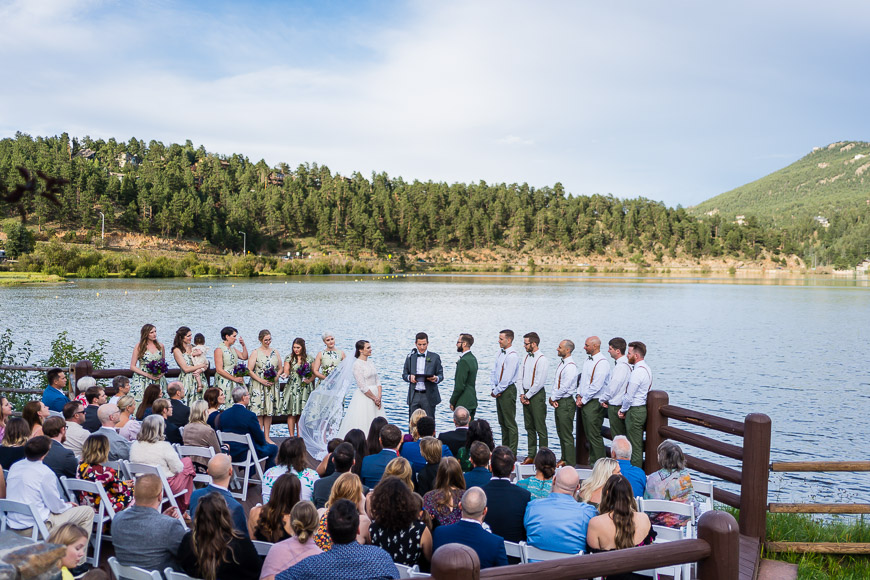
Once you start getting clients, it can be easy to think that the next step is to shoot the wedding. Don’t worry – we’ll talk about photography skills in the next section. But first, we need to talk about running the business.
You’re going to want to develop a streamlined workflow that allows you to efficiently manage inquiries, bookings, contracts, payments, and post-production work.
You’ll also want to establish clear pricing and packages that are easy for clients to understand and book.
Make sure to include all the necessary details, such as the number of hours of coverage, deliverables, and any additional services you offer.
In this section, we’ll talk about accounting and finances as well as client management and workflow.
Wedding Photography Accounting
Accounting is another critical aspect of running a successful wedding photography business. Proper accounting practices can help you keep track of your income and expenses, manage your cash flow, and make informed business decisions.
The first step is to separate personal and business finances by setting up a separate bank account for your business and using it exclusively for business-related expenses.
💍 Related: 43 Tools to Run a Wedding Photography Business
From there, you need to keep track of all your expenses, including equipment purchases, software subscriptions, travel expenses, and office supplies.
You can use accounting software like QuickBooks or Xero to track your expenses automatically. Keeping good records will make it easier to file your taxes and track your financial performance.
Monitor your cash flow regularly to ensure you have enough money to cover your expenses and save for taxes. Create a budget and cash flow forecast to help you plan your expenses and income for the year.
Stay organized with your accounting as well as your client management, which is our next topic.
Pricing and Packages
Once you create a budget and write down all of your expenses, you’ll be able to get an idea of what you need to charge for your wedding photography.
It’s best not to only set pricing based on market research. Instead, you want to build a profitable business which means your income needs to eventually exceed your expenses.
In the beginning, you might aim for quantity over quality when it comes to projects and try to shoot a lot in order to grow your skills and your experience.
If that’s the case, then your budget should reflect that as well, and you should aim for low overhead. Eventually, you’ll want to set your pricing and packages in a sustainable manner.
You might build packages based on an hourly rate or on an 8-10 hour day. From there, you’ll decide if you’re going to include digital files, a wedding album, or any other products in your packages.
Since pricing seems to range from $3,000-$10,000, it can be hard to know where to start, but based on your location, competitors, and experience, you will get a pretty good idea.
Client Management
Client management starts with negotiating quotes and contracts and managing sales. From there, you also have to consider the day-to-day operations of your photography business, such as scheduling shoots, managing clients, shooting, and editing photos.
It can be helpful to use tools such as Tave client management software to help you streamline your processes.
💍 Related: What is the best studio management software for photographers?
Whether you use a tool, spreadsheet, app, or old-fashioned notebook, it’s important to track your projects and make sure you deliver on your promises and your deliverables.
You’ll want to set up a workspace, whether in a home office or elsewhere and make sure you have a to-do list and calendar to keep you on track.
Beyond just the logistical side of things, it’s important to deliver a memorable client experience by providing excellent communication, prompt responses to inquiries, and a friendly, professional demeanor.
We always do our best to go above and beyond to exceed our client’s expectations by underpromising and overdelivering. Remember, these clients might be the ones to refer you to your next clients.
Photography Skills You Need to Develop
What photography skills do wedding photographers need to know? All of them.
I wish I were joking, but the reality is that wedding photographers have to be prepared to shoot in almost every weather or lighting condition that exists and under high pressure.
You’re going to need technical photography skills as well as people skills and time management.
Technical Photography Skills
A wedding photographer should have a solid understanding of the best camera settings for weddings, lighting, composition, and exposure.
You’ll use your creative eye and be able to capture unique and memorable shots of intimate or stressful moments. You should be able to think outside the box and use different angles, perspectives, and techniques to create visually stunning images that tell a story.
Meanwhile, you can’t miss that split-second first kiss or any other important moment between the Bride and her family members.
You’ll need to be able to adjust your camera settings on the fly, handle different lighting situations, and create visually compelling compositions.
💍 Related: How to photograph a wedding – 18 key tips for beginners
A wedding day might start in a dimly lit dressing room, move to a bright outdoor ceremony venue, and finish in a pitch-black reception hall, all while people are crying, dancing, and giving speeches.
You need to be prepared to deal with any and all lighting conditions.
You also need strong editing skills and the ability to enhance your images in post-production.
You should be proficient in using photo editing software like Lightroom to adjust exposure, color balance, and other aspects of your photos.
Working with Clients
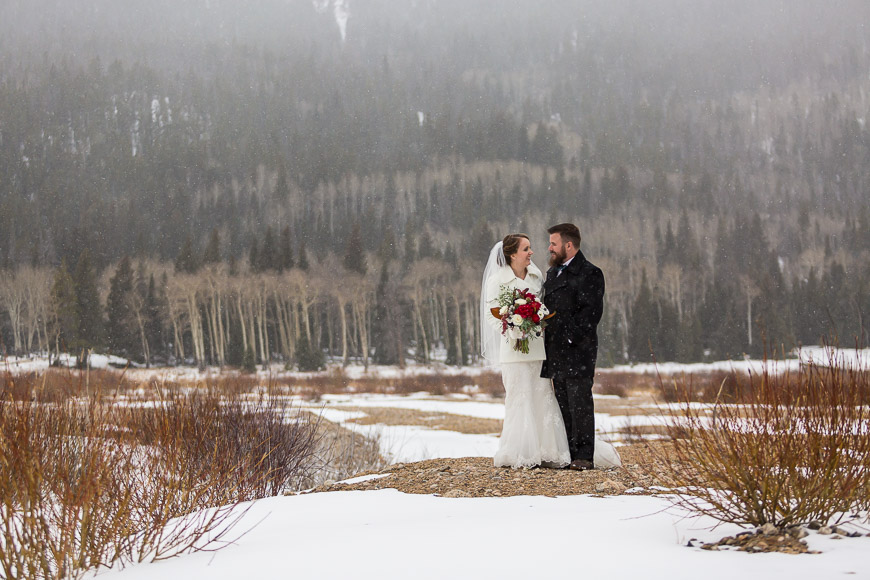
If you look back to your thoughts on your wedding photography style, you’ll be able to identify the type of images you need to be able to create.
Don’t use your preferred style as an excuse not to learn how to do something that you need to learn. For example, don’t refuse to learn how to use artificial light just because you’re a natural light photographer.
The truth is that any improvement in any aspect of your photography will benefit you as a well-rounded photographer. Therefore, wedding photography typically involves capturing portraits of the couple, family members, and the wedding party.
💍 Related: 13 must-do wedding party photos
A wedding photographer should know how to pose the subjects, create a relaxed and natural environment, and capture emotions and expressions.
Additionally, candid moments are essential to capture the mood, emotions, and atmosphere of the wedding day.
A wedding photographer should know how to blend in, be discreet, and anticipate the moments to capture candid images that tell the story of the day.
Other Important Skills
Wedding photographers also need to have good time management skills in order to stick to a schedule while getting all the shots on the wedding shot list.
You should be able to plan out your shoots, arrive on time, and keep things moving smoothly throughout the day. It’s important that a wedding photographer can get the schedule back on track if things don’t go to plan.
This requires good people skills as well since a wedding photographer needs to work closely with couples, families, and guests.
You should be able to communicate clearly, put people at ease, and direct them for posed shots.
💍 Related: How to pose the bride and groom at a wedding
It’s important to keep clients happy throughout the wedding process, which can be tricky when emotions are high.
Everyone else may be freaking out about family drama or the weather, but you, as the photographer, need to stay calm and get the job done.
You need to accomplish consistent sharp images and deliver them to the client on or before the day that you promise them.
The Parts of a Wedding Day and How to Capture Them
Weddings are one of the most significant events in people’s lives, and typically you literally get only one shot at getting the shot.
That’s why, as a wedding photographer, it’s essential to understand the different parts of the wedding day and how to capture them.
In this section, we’ll discuss the various components of a wedding day and provide tips on how to capture them beautifully.
Getting Ready
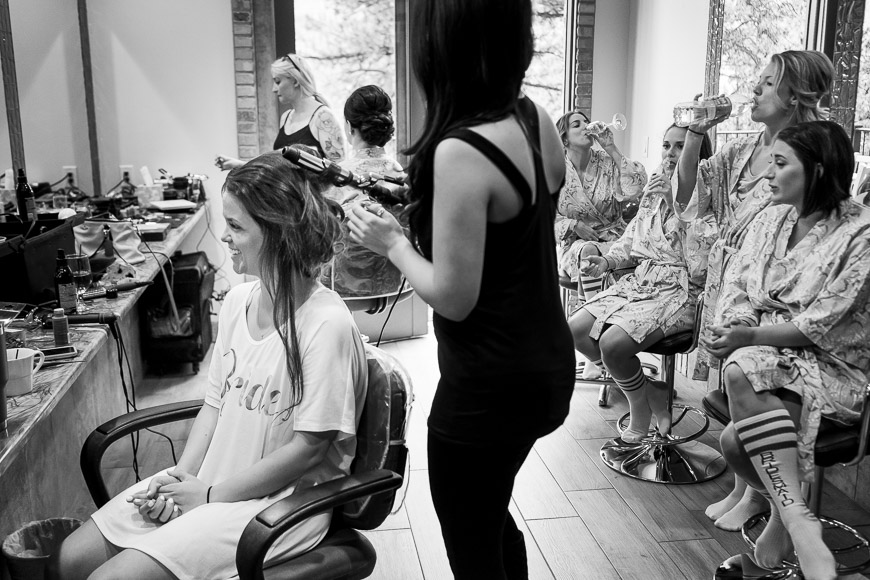
The “getting ready” portion of the day is when the couple and their wedding party prepare for the ceremony. This part of the day is full of excitement, anticipation, and nervous energy.
As a photographer, it’s important to capture these emotions as they happen.
A lot of photographers photograph the details of the wedding dress, shoes, jewelry, and any other accessories to help set the scene.
💍 Related: Photographing wedding rings: ideas & tips for stunning results
However, other photographers believe it’s more important to capture candid moments of the bride and groom getting ready for their wedding party.
This is where it’s important to set expectations with your couple so that you know what they want and expect from you.
Sometimes the getting ready room is dimly lit and extremely cluttered, making it challenging to photograph. You’ll want to look for window light when possible and develop your skills with an off-camera flash to level up your photos.
This can be a great time to experiment with creative and artistic shots while also focusing on capturing the story of the morning.
The Wedding Ceremony

The ceremony is the most crucial part of the day. It’s where the couple exchanges their vows and officially becomes married. As a photographer, you’ll want to capture the key moments of the ceremony, such as the first kiss and the ring exchange.
However, don’t forget to capture the reactions of the couple and their guests as well. Photograph the emotional moments and the laughter, as these are what make each ceremony unique.
Be sure that you know the elements of a ceremony and be on alert so that you can be in position whenever anything important happens.
This is a good time of the day to have a plan for where you’re going to be because you’ll only get one chance at these moments.
It’s helpful to know the ceremony set up ahead of time so you’ll know how much room you have to maneuver around and which lenses you’ll need to get the shots.
Make sure your batteries are charged, and your shutter speed is fast so that you don’t miss a moment of the wedding ceremony.
The Wedding Portraits
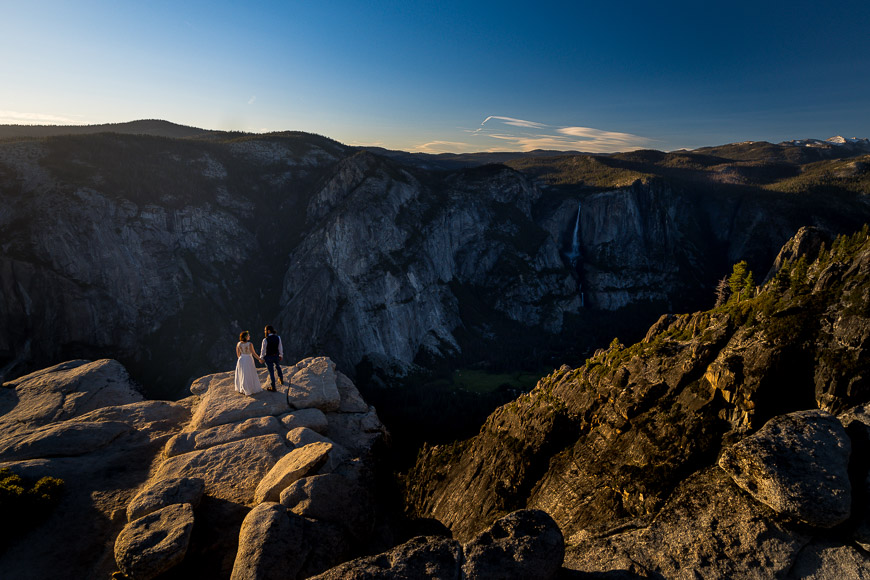
After the ceremony, it’s time for the wedding party and family portrait session. This is where the couple takes formal portraits with their wedding party and immediate family.
I consider these photos to be super important images that no one wants to take, so I take them as efficiently, consistently, and effectively as possible.
As a photographer, it’s essential to create an organized, relaxed, and fun atmosphere for the couple and their wedding party.
Everyone has a different way of doing this, but for me, these photos are about the people, so find the best light at a location close to the ceremony so that you don’t have to wrangle everyone too much.
Ideally, you can also get a great backdrop but try not to sacrifice squinty sweaty faces.
At some point during the day, you’ll also capture bridal portraits of your couple. This might happen after family pictures or before the ceremony, along with a first look.
My preference is to try to schedule them around golden hour when possible, but that may depend on your photography style.
The Wedding Reception
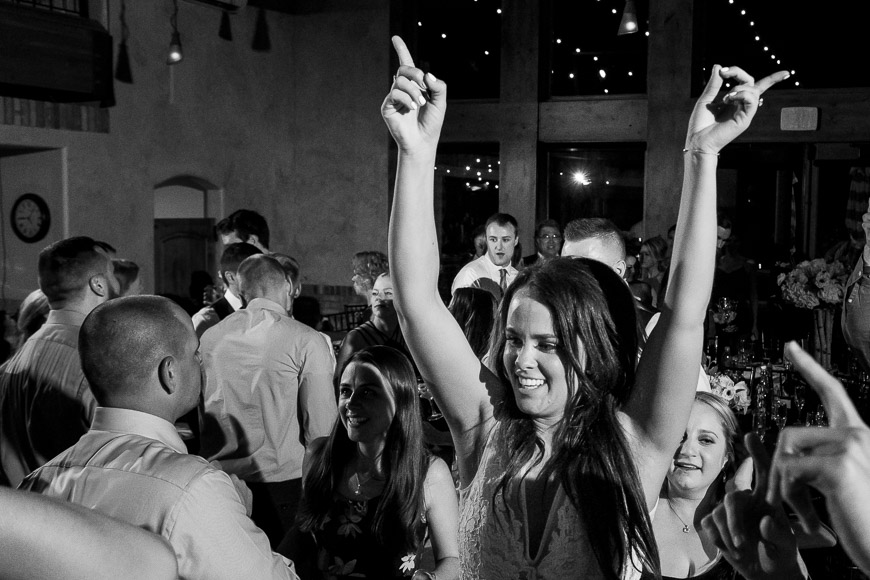
The reception is where the party begins. This is where the couple and their guests celebrate their marriage with food, drinks, and dancing.
As a photographer, you may want to capture the ambience of the reception, such as the decorations, the food, and the dancing.
But first, we have a few more important events starting with a grand entrance when the couple is introduced as husband and wife.
Next, you’ll want to capture the speeches, cake cutting, and the couple’s first dance. Find out ahead of time from the DJ or planner where each formal event is taking place so that you can have the appropriate lighting set up.
It’s important to have a lighting plan for receptions and be prepared to shoot in low-light conditions. There are a few different on and off-camera flash techniques for weddings that are worth learning so that you can select the best lighting for your conditions.
My advice is to start simple with something reliable and then slowly grow your skillset to try other creative ideas.
Wedding Post-Production and Deliverables
Unfortunately, your job is not over when you pack up your camera bag and step off the dance floor.
Post-Production
The first step of the post-production process is culling. This involves going through all the images taken during the wedding day and selecting the best ones.
The goal is to eliminate duplicates, blurry shots, and images with poor exposure so that your clients have images of all of the important events without so many that they’re overwhelmed with decisions.
💍 Related: What is the best culling software for wedding photographers?
After culling, the next step is editing the selected images, which often involves color correction and exposure adjustments.
You’ll want to develop a consistent editing style that you can use throughout the entire collection of images and all of your weddings so that your clients know what to expect.
From there, you might do some retouching which involves removing any blemishes, distracting objects, or unwanted elements from the images.
The final step of the post-production process is designing the wedding album. The album tells the story of the day and showcases the best images from the collection.
It’s essential to work with the client to ensure that the album design meets their preferences and style but I always design a draft for them to give them a starting point so that they’re not overwhelmed with decisions.
Wedding Deliverables
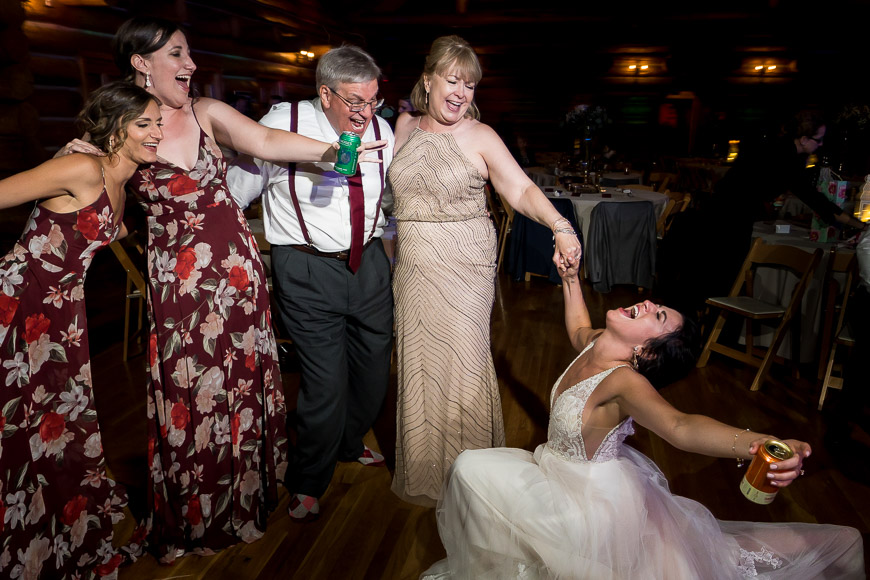
After completing the post-production process, it’s time to deliver the images to the client. Most of the time, these days, that means delivering high-resolution images that they can print, share on social media, and keep as digital copies.
We deliver digital files in an online gallery from which they can directly order prints.
💍 Related: What are the best online galleries for photographers?
As I alluded to by including the album design in the post-production, many clients also want an album to showcase their wedding day.
The album is a physical and tangible product that the couple can hold and look at. If you select an album company that compliments your photography style and showcases your work in a high-quality manner, your couples will love it.
From there, couples may also want prints or wall art to display in their homes. Some photographers are great at sales and rake in additional income, but I personally love utilizing online gallery tools such as coupon codes.
I don’t count on print sales, but it’s always a nice bonus when they come in effortlessly.
Wedding Photography Gear
Lastly, we come to gear. You should acquire gear that you can afford, that you know how to use, and that helps you accomplish your goals.
Cameras for Wedding Photographers
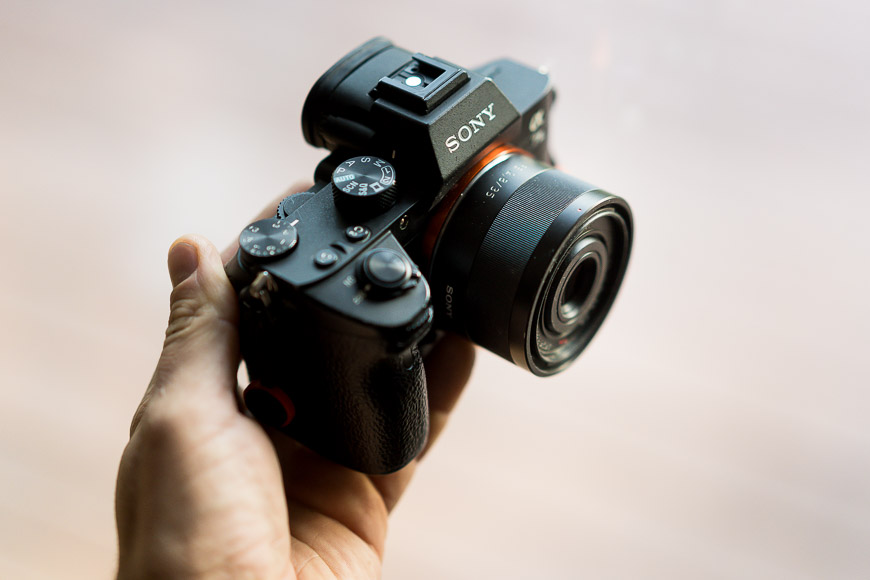
When it comes to cameras and lenses, there are a lot of choices on the market for every budget. You’re going to want a camera body and a backup camera body.
Your backup doesn’t necessarily have to be as expensive as your primary, but it is easier if it’s the same camera.
Your backup camera likely won’t get much use. However, when you do need it, it shouldn’t slow you down because you’re unfamiliar with it.
I like a lightweight, durable camera body with dual card slots so that my photos are automatically on two cards reducing the risks of a corrupt card (trust me, I’ve been there).
There’s that idea of a backup again. Other features to consider are resolution, autofocus speed, and low-light capabilities.
Some people start with an APS-C size sensor, but I usually recommend a full-frame camera. It’s more expensive, but you’ll likely end up going full frame if you stick with wedding photography.
💍 Related: What camera gear is essential for a wedding photographer?
The biggest investment is a series of high-quality lenses.
Lenses last much longer than camera bodies because the technology doesn’t change as fast. Once you pick a camera system (Sony, Canon, Nikon, etc), you’ll likely stick with it because the lenses are mount specific.
I am a loyal Sony user because of their wide range of affordable lenses, but many people also like other brands for various reasons.
My main suggestion is to rent or borrow lenses or cameras and try them out before you invest in a lot of gear.
Lenses for Wedding Photographers
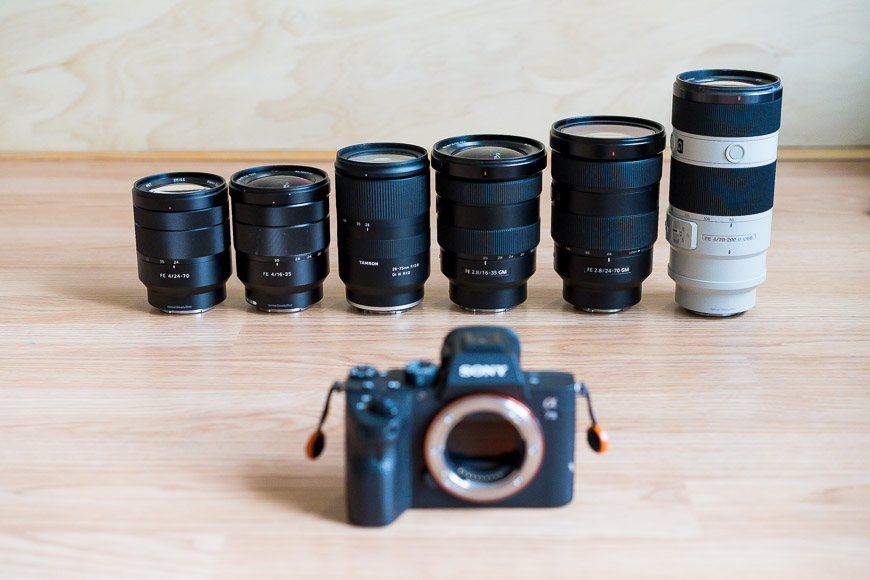
Once you have your camera body, you’ll need to select your lenses. On the simple end, you might want a 35mm and 85mm focal length. You might choose two prime lenses or a 24-70mm zoom lens.
You’ll want to determine which focal lengths are most practical for your style of wedding photography. Generally, something in the 35mm range is great for wide shots and photojournalism, and something in the 85mm range is great for portraits.
Budget is a factor, but you’ll want to get the fastest (lowest aperture) lenses that you can afford so that they’ll perform well in low light.
It can be nice to have a variety of lenses, but you also don’t want to be bogged down by changing lenses, especially if you don’t have time (i.e. during a ceremony).
There are a lot of reviews you can read to choose the best lenses for your wedding photography. I love the 16-35mm, 50mm, and 85mm.
A 70-200mm is also a classic wedding photography ceremony lens because it allows you to zoom in close on the couple without intruding on the moment.
If you can’t afford the latest and greatest when it comes to lenses, check out used equipment or nonnative brands like Sigma or Samyang.
They won’t hold their value quite as well, but you’ll be able to get similar quality at a lower price point.
Other Equipment and Accessories
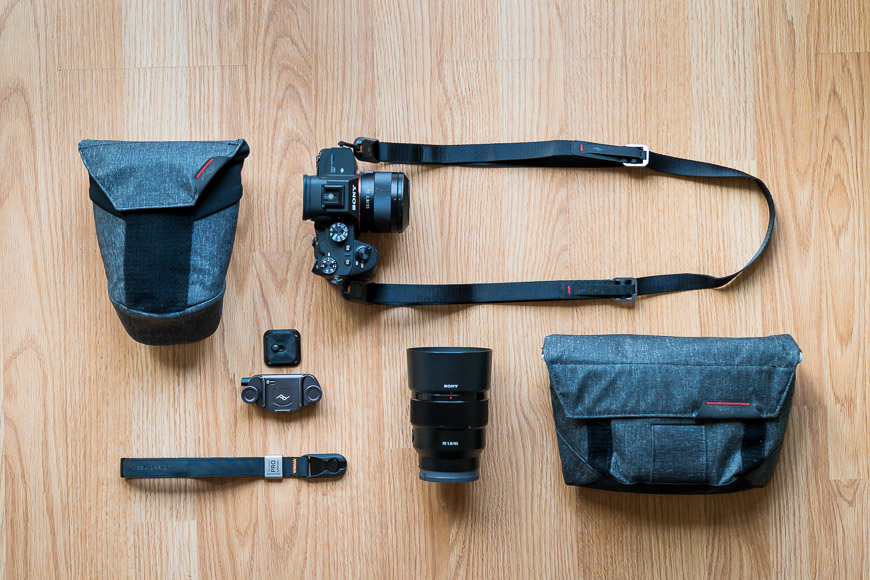
Off-camera flash is a whole topic on its own when it comes to wedding photography. As you’ll learn, lighting at many ceremony and reception venues is not ideal for photography.
You’ll want to have a flash set-up and light stands. This may look different for everyone, but you need to have a way to shoot speeches and dances in a dark room. You might also choose to use modifiers.
Off-camera flash techniques are popular because they allow for a lot of creativity and versatility. Depending on your flash set-up, you’ll also need a flash trigger to control them.
There is a lot to learn, but a good starting point is a light stand placed 45 degrees off-axis from your camera and pointed down toward your subject.
Having a reliable trigger that you can manually control the flash power is essential. We use the Godox system because it is affordable, reliable, and versatile. I would check out the Godox Xpro trigger and AD2o0 flash.
You might also look at adding a grid modifier to your light so that it will only shine in the direction you want it to and not spill all over the background.
💍 Related: What are some creative lighting techniques for wedding photography?
Other accessories include spare batteries, chargers, lens cloths, polarizing filters, and memory cards. All of this needs to have a home in a camera bag that allows you to transport it from the ceremony to the reception and beyond.
You want your gear to be transportable so that you can keep up with the events of the day. We started with an inexpensive camera bag but have since come to really appreciate the Shimoda Designs bags.
A good camera backpack will keep your gear organized and protected. It’s usually worth investing in a good camera bag so you don’t have to deal with insurance when your camera gear gets damaged.
You do have insurance, right?!
All that said don’t get gear acquisition syndrome (GAS). This dangerous condition will have you schlepping numerous bags of equipment with you on every shoot that you rarely use.
Keep it simple and only buy things that will elevate your photography skills or save you time (aka money).
Do You Still Want to Become a Wedding Photographer?
If we go all the way back to the beginning, I asked you why you want to become a wedding photographer.
If you are interested in creativity, flexibility, and possibility, I hope this article helped you discover how you can design your business to fit your vision.
From defining your style to building your marketing plan and growing your skills, it’s certainly not boring.
Demanding, creative, seasonal, physical, flexible, rewarding, and entertaining are some words that I use to describe being a wedding photographer.
After over a decade of shooting weddings, I’ve not only witnessed but have captured incredible strength and undeniable love. I’ve gotten down on the dance floor and drenched during a wedding ceremony.
It’s good to put thought into where you’re going and make a plan for how to get there. But in the end, you’ll get to the point where you just have to go out and take a shot!








